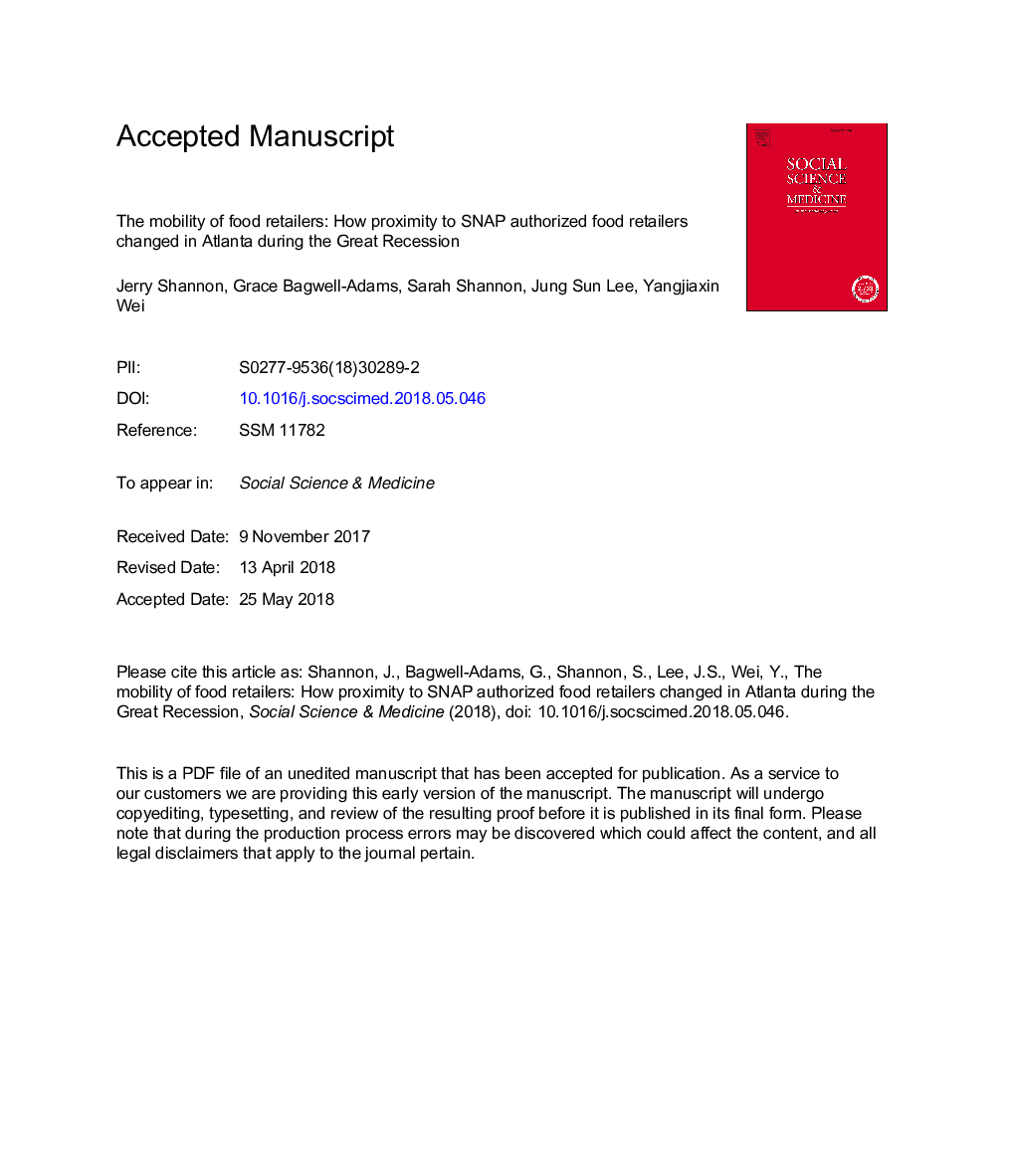| Article ID | Journal | Published Year | Pages | File Type |
|---|---|---|---|---|
| 7327526 | Social Science & Medicine | 2018 | 34 Pages |
Abstract
Retailer mobility, defined as the shifting geographic patterns of retail locations over time, is a significant but understudied factor shaping neighborhood food environments. Our research addresses this gap by analyzing changes in proximity to SNAP authorized chain retailers in the Atlanta urban area using yearly data from 2008 to 2013. We identify six demographically similar geographic clusters of census tracts in our study area based on race and economic variables. We use these clusters in exploratory data analysis to identify how proximity to the twenty largest retail food chains changed during this period. We then use fixed effects models to assess how changing store proximity is associated with race, income, participation in SNAP, and population density. Our results show clear differences in geographic distribution between store categories, but also notable variation within each category. Increasing SNAP enrollment predicted decreased distances to almost all small retailers but increased distances to many large retailers. Our chain-focused analysis underscores the responsiveness of small retailers to changes in neighborhood SNAP participation and the value of tracking chain expansion and contraction in markets across time. Better understanding of retailer mobility and the forces that drive it can be a productive avenue for future research.
Related Topics
Health Sciences
Medicine and Dentistry
Public Health and Health Policy
Authors
Jerry Shannon, Grace Bagwell-Adams, Sarah Shannon, Jung Sun Lee, Yangjiaxin Wei,
